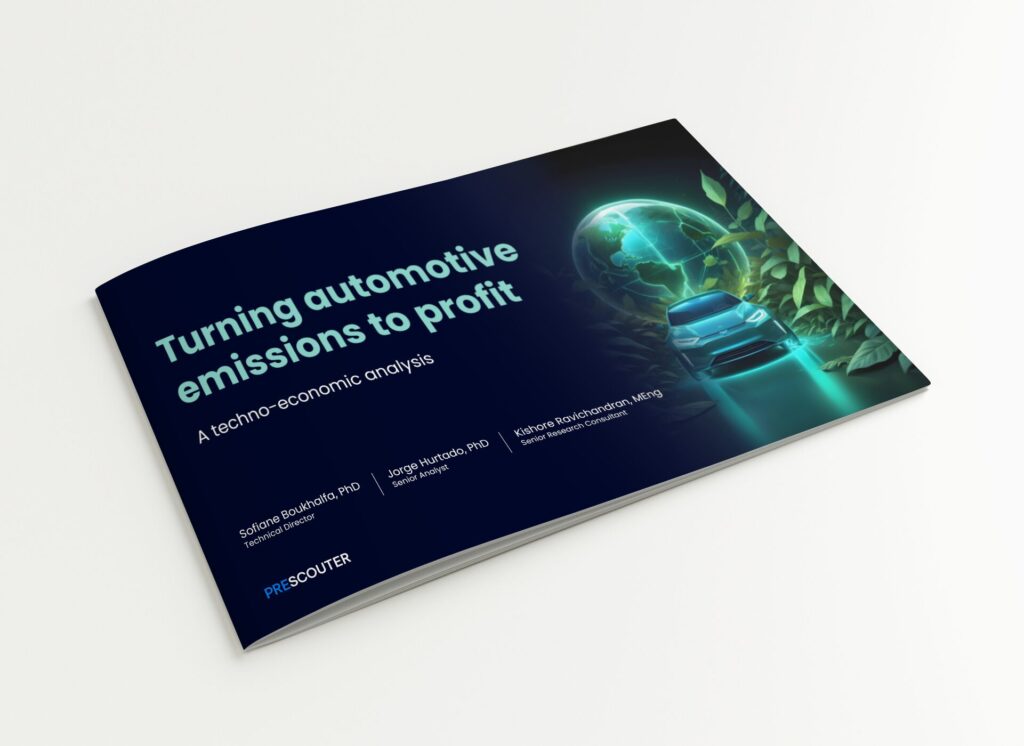As the demand for vehicles escalates, so does the industry’s carbon footprint. However, this also presents the automotive industry with a promising opportunity to convert carbon emissions into profits through different carbon conversion methods. This can help turn a pressing environmental issue into an advantageous venture for the automotive sector.
Massive carbon footprint of the automotive sector:
The automotive industry’s expansion has significantly increased its carbon footprint, primarily due to higher production volumes. Even as emissions per car manufactured saw a decline, the total car emissions soared by nearly 50% post-pandemic. This surge is linked to the global demand for more vehicles, especially in the developing markets.
ICEVs and EVs
Internal combustion engine vehicles (ICEVs) remain significant contributors to the increasing carbon footprint, primarily through tailpipe emissions. While electric vehicles (EVs) offer reduced tailpipe emissions, their production is not without environmental costs. The manufacturing process for EVs involves significant carbon emissions, which casts doubts on their sustainability claims.
Material emissions
Material emissions also play a critical role in automobiles’ overall environmental impact. In 2022, the world’s top automakers utilized approximately 39 million tonnes of steel, leading to considerable carbon emissions. Also, as battery electric vehicles’ (BEVs) market share increases and their batteries become more prevalent, the emissions attributed to vehicle materials throughout their lifecycle are expected to rise significantly.
What is decarbonization in the automotive industry?
Decarbonization represents a comprehensive strategy to cut carbon emissions across a vehicle’s entire lifecycle, from manufacturing to disposal. As part of their commitment to sustainability in automotive industry, major manufacturers are setting ambitious goals to reduce their carbon footprints by revamping manufacturing techniques and embracing greener technologies.
These advancements involve integrating renewable energy sources and improving the efficiency of materials used in production, particularly high-emission materials like aluminum and plastics. While these efforts are geared towards sustainability, they also present significant opportunities for the automotive industry to generate profit.
Transforming automotive emissions into profitable products:
Among the key strategies for carbon conversion, the most notable are thermochemical conversion techniques such as pyrolysis and gasification, bioconversion, and other novel methods like absorption and adsorption. These methods provide a unique approach to converting harmful emissions into profitable outputs for the automotive industry.
Pyrolysis
Pyrolysis transforms organic materials into biochar using heat in an oxygen-limited environment. This method efficiently processes biomass with minimal emissions, making it an eco-friendly solution. The biochar produced is a valuable commodity since it is used for soil enhancement and carbon sequestration.
Gasification
Gasification converts carbon-rich materials into synthetic gas through high temperatures and a controlled amount of oxygen. This versatile technology supports the generation of clean energy from various types of waste. The produced synthetic gas, or syngas, can be further processed into electricity, fuels, and chemicals.
Absorption
Absorption involves capturing carbon dioxide directly from the air and converting it into useful chemicals like methanol and polycarbonates. The process uses solvents to absorb CO₂, which is then chemically transformed. This method reduces greenhouse gases and creates high-demand products in the chemical industry.
Adsorption
Adsorption, similar to absorption, uses solid materials to capture carbon dioxide from ambient air. It is particularly effective for low-concentration applications, making it ideal for direct air capture instances. The captured CO₂ can be converted into various chemicals, providing a dual benefit of mitigation and resource utilization.
Access our complete report to explore:
- Detailed insights into different carbon conversion solutions
- Comprehensive cost analysis of these methods
- The most profitable pathways for the automotive industry
How can PreScouter help?
PreScouter offers strategic insights that can help organizations capitalize on carbon emissions through innovative carbon conversion methods. Our tailored research and analysis guide businesses in selecting the most efficient and economically viable options, turning environmental challenges into opportunities.
Here are some of the ways we can assist:
- Tailored Research: Offer insights that align with specific client needs in the automotive sector, focusing on environmental sustainability and carbon capture.
- Technology Profiling: Provide detailed profiles on innovative technologies that can transform carbon emissions into valuable products.
- Revenue Modeling: Help clients understand potential profitability from different carbon conversion methods and select the most effective one.
- Market Analysis: Evaluate market dynamics, including demand, competition, and growth potential for products derived from carbon emissions.
- Partnership and Collaboration: Assist in identifying and assessing potential industry partners to expedite technological adoption and commercialization.
- Regulatory Compliance: Guide companies through the regulatory landscape, ensuring compliance while maximizing financial returns from green initiatives.








